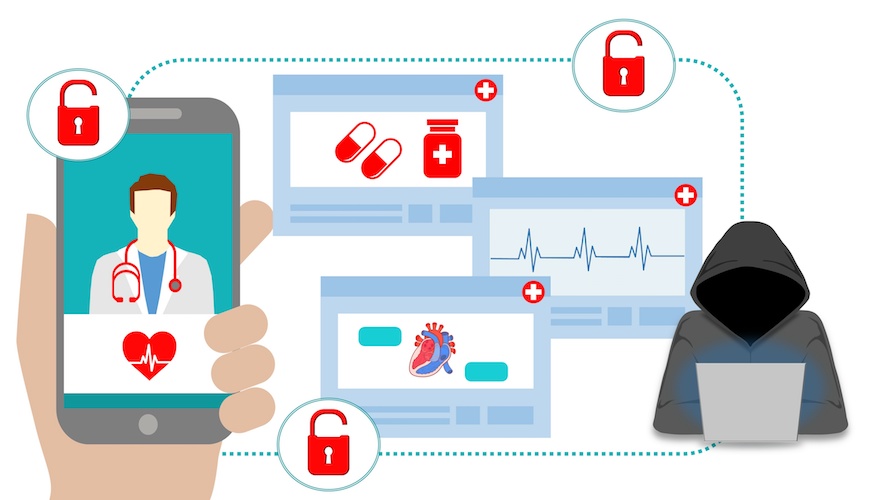
Over the years, information security has become one of the most important factors in the health care business. Even though the world’s technological advancements have made many aspects of people’s lives healthier and more efficient, they’ve also created new risks to patient data. As such, technology has also introduced enormous security risks.
With that in mind, read through this article as you’ll learn some tips and techniques to keep your patients’ data safe and secure.
Tech Tips To Keep Your Patients’ Data Safe
Since cybercriminals are always coming up with new ways to access or steal information online, healthcare providers need to update their security measures regularly. That’s why HIPAA rules and data privacy and protection compliance in the health care sector are so important.
Even the most negligible technological exposure can have enormous implications for health care practitioners and organizations. That said, here are some helpful tips for maintaining compliance while keeping patient data secure:
1. Use A HIPAA-Compliant File-Sharing Tool
When sharing protected health information (PHI) files among your team, always make sure you’re using a HIPAA-compliant file-sharing tool. These tools typically offer additional security features such as encryption and limited access to confidential data.
These file-sharing tools usually use unique user IDs and passwords for each user and maintain audit trails on all activities with shared data. You can also configure settings to secure activity notifications for admins. They also allow users to control who sees their files and is granted permission to modify and access them.
2. Password-Protect Your Smartphone
One primary reason for PHI security breaches were due to lost or stolen devices. Because of this, it’s crucial for healthcare professionals to follow best practices in cybersecurity, such as password-protecting their smartphones and other mobile devices that they use for work and keeping them separate from personal ones. Consequently, personnel who are authorized to access PHI using their mobile devices to access sensitive data are obliged to enable the auto-lockout function to safeguard electronic protected health information (ePHI) from any more unauthorized access.
3. Use Two-Factor Authentication
Two-factor authentication or 2FA is an enhanced form of security that requires more than one method of validation. For example, for a user to log in to their account, they’d need something they know (their username and password) as well as something sent only to them (a unique code provided by any two of these methods: text message, email, time-based one-time password [TOTP], etc.).
This security measure makes it harder for hackers to gain access to someone’s account. When choosing a 2FA app for your smartphone, it’d be best to double-check that it generates TOTP passcodes and uses an app-specific password or 2FA backup codes instead of SMS as the second authentication method.
4. Use An Encrypting Solution for PHI
To protect electronically stored PHI, you must encrypt all the data. Encryption is a process that prevents malware from accessing patient records and scrambles the data so only authorized individuals can access it. Encrypting will not render your data unreadable in case of a disaster or loss but instead prevent unauthorized personnel from accessing the information.
5. Avoid Using Wireless Networks With PHI
Even if you’re using an encrypted computing device, you must keep the wireless networks you use for work purposes separate from those used for personal devices (smartphones, tablets, home laptops) or other non-work-related activities on your network. This is because personal devices are more likely to contain malware that may compromise your data while also exposing PHI to the risk of theft or loss.
6. Leave Your PHI At Work
Avoid sending sensitive patient information via text message, email, voice mail, or other channels. If you absolutely must share PHI outside of work hours, make sure it’s encrypted and that you’re using a secure method.
7. Keep Your Operating System Updated
Make sure your operating system and all other software you use for work purposes are updated with the developer’s latest security patches. Developers also advise that you install an antivirus program on your computer and use it regularly to scan for any possible threats.
8. Use An Off-Site Backup System For All PHI Files
When storing files with PHI on servers, always be sure that they’re stored separately from non-PHI data. This practice can help prevent ransomware attacks. Ransomware attacks lock a user’s files and then demand a ransom to restore access. In case non-PHI data has been compromised, PHI data will still be safe.
Final Words
Technological advancements have made it easier for hospitals and healthcare providers to store, process, share, and track patient data more efficiently. However, the same things that make digital records so helpful can also introduce security risks. That’s why proper steps for enhancing your HIPAA compliance must be taken to harness the benefits of this technology without exposing sensitive PHI to breaches or theft.
By following the tips on this list, you can ensure that PHI is available when needed but remains out of reach for cybercriminals.
Cover Image by Adobe Stock
